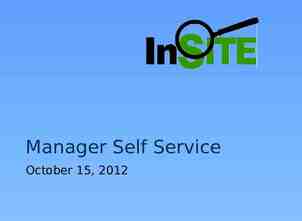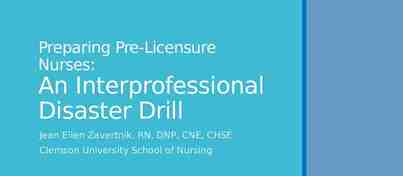MS1 General Safety Orientation
28 Slides3.62 MB

MS1 General Safety Orientation

Congratulations and Welcome to

Safety Services Calvin Shanks Sr. Director Jose Melchor Assistant Director Jacqueline Lomeli Chem/Rad/Biosafety Manager Martha Quezada Department Coordinator Richard Chacon Sr. Safety Officer

Safety Services Texas Tech University Health Sciences Center is committed to providing a safe workplace environment for faculty, staff, students and visitors through compliance with legislative requirements as decreed in federal and state statutes and applicable municipal codes, together with TTUHSC safety policies and procedures. Education & Training Safety Training Unit Safety Officers Safety Newsletter Environmental Chemical / Bio waste Pest Control Indoor Air Quality Fire & Life Emergency Protocols Code Enforcement Extinguisher Training Laboratory Laboratory Safety Consultation Safety Equipment Inspection Laboratory Survey Occupational Safety Ergonomics Accident Investigation Hazard Identification Radiation Safety Radiation Protection Radioactive Material Laser Safety http://elpaso.ttuhsc.edu/elpaso/safety/ /

Safety Orientation Programs Login Instructions If you will conduct any lab work (education or research) and you have NOT taken the laboratory safety essentials modules, you will need to complete LSE before starting in our labs. Work with radioactive materials or radiation sources, you are required to take a short self study module and class. Permitting will also be required. Contact me. Most lab research projects need institutional approval. Contact me.

Level 2 Form New Student Orientation to the Department 1.The location of the emergency equipment closest to your primary work area. 2.Form must be completed within 5 days. 3.Your department Unit Safety Officer (USO-Erika Jaquez) or Supervisor will assist you in completing this form. 4.Once completed – make a copy – Send original to Safety Services - attention Martha Quezada, Safety Services.

Be proactive. Not reactive. Get to know where all emergency EXITS are located in your building. “Always mind your surroundings.” - Ra’s Al-Ghul/Henri Ducard ALWAYS evacuate the building when the emergency alarm has been activated.

Medical Education Building Assembly Areas For N GGHSON Emergency Evacuations ASB Building Medical Education MSB West Health District W CONCEPCION ST. Building MSB East MSB Annex O DR S A P EL Texas Tech – El Paso – Hazardous Material Emergency Response Plan – Appendix B E S IV E When evacuating the building during an emergency you are to go to your designated assembly area and stay there until you are told it is SAFE to return. Ensure that you are accounted for once you get to your assigned meeting place. Revised: Oct. 2015

Emergency What do I do in a FIRE situation? Procedures

FIRE SAFETY: TERMS TO KNOW RACE Procedure to follow in a fire emergency. R Rescue – The biggest hazard in a fire is . is Remove people from the hazard. Being unprepared. A Alarm C Contain – E Evacuate – Pull the nearest FIRE ALARM. Close doors; cut-off potential O2 sources. Leave the building via nearest EXIT *Assist patients in EVACUATING *If a patient can’t be evacuated, take them as close to the stairwell as possible. *Assemble with your department at designated assembly area - building dependant.

SAFETY TEAM Composed of Safety Committee Members and other volunteers – wear bright Orange vests during “evacuation” events. They provide direction and assistance during fire alarm situations. Please – follow their directions and ask them for assistance should you or a patient/visitor need help while outside during an evacuation event.

How to Use a Fire Extinguisher PASS Fire Extinguisher USE Procedure P PULL the pin at the top of the extinguisher. A AIM the nozzle at the base of the fire, not the flames. S SQUEEZE the handle slowly. S Sweep from side to side. ONLY use a fire extinguisher if the fire is SMALL and you have an exit to your BACK. It’s a judgment call – decide whether to extinguish a fire or evacuate.

Fire Extinguishers: four classes. Class A for Combustible materials; wood, paper, fabric. Class B for Solvents and Flammable products; gasoline, kerosene, oils. Class C for Electrical fires; wiring, appliances. Class D for combustible metals, such as magnesium, titanium, potassium and sodium.

Other Fire Safety Considerations: TTUHSC and University Medical Center are SMOKE FREE campuses. Smoking is not permitted on TTUHSC property. When you hear a Fire Alarm activation, always EVACUATE. NEVER assume a false alarm activation. Fire DRILLS will be announced to Clinics and Research departments in advance. Only those individuals directly involved in patient care or conducting time sensitive procedures when a DRILL is scheduled are not required to participate. Also, clinic patients and visitors are not required to evacuate during a DRILL. If none of the former apply to you, please evacuate the building. DRILLS are essential for emergency preparedness.

Emergency Preparedness http://elpaso.ttuhsc.edu/emergency-preparedness/ default.aspx Here you will find emergency awareness training as well as campus status info. Faculty and staff are required to complete.

STAT! ALERT Emergency notification system to communicate important alerts, campus weather status, and emergency response information to students/faculty/staff. Visit http://elpaso.ttuhsc.edu/elpstatalert/default.aspxt o sign up. TTUHSC OP 10.02 AND OP 76.15 outline this function.

New OSHA Hazard Communication Standard: the GHS standard RIGHT TO KNOW UNDERSTAND ACT REQUIRED BY LAW IN TEXAS

HAZARD COMMUNICATION TEXAS HAZARD COMMUNICATION ACT You have the “RIGHT TO UNDERSTAND” the hazards that the chemicals/solutions/reagents that you are working with pose; more importantly, how to protect yourself and coworkers. How to easily recognize and identify potential hazards and exposures of the material. Receive training about safe handling of chemical and PPE required to protect from exposures. ACT requires for ALL CHEMICALS to have a Safety Data Sheet (SDS) readily available the is vendor specific to the material. SDS – Gives needed SAFETY information and how to respond to incidents involving the material. SDS must be obtained from the manufacturer. Each Department is required to have available copies of SDSs for the materials they work with .

Identify the 4 lab hazards .

Identify the 4 lab hazards . 1) 2) 3) 4) Long hair Loose sleeves Goggles Acetone

There, that’s better

GROSS ANATOMY LAB SAFETY Dissection Safety Sharps, sharps, sharps. Technique: blunt dissection vs. sharp dissection. Technique: learn to use your tools. Slippery tools. Again, always mind your surroundings. Plan ahead, go over your dissection the night before.

Sharp Waste Needles, syringes and other "sharps" (scalpels, razor blades, slides and cover slips, microtome blades) Do not recap needles Never fill container above the full line

Biological Waste What waste goes in the red bins? Yes: Biological waste, sharps containers, material saturated with blood or bodily fluids, tissues, organs, anatomical waste, animal waste No : Unsoiled PPE (such as gloves), exam table paper, regular waste, broken lab glass, paper products, etc.

Report Hazards Safety Services –215-4820 Facilities Maintenance – 215-4491

AAAAND FINALLY. QUESTION AND ANSWER TIME.

Useful Contacts and Information Safety Services 915-215-4820 http://www.ttuhsc.edu/admin/safety/elpaso/ Jacqueline Lomeli Chem/Rad/Biosafety Manager, Safety Services TTRAC Room 115 Cell 915-867-9130 Office 915-215-4966 [email protected]

Good Luck and Best Wishes






